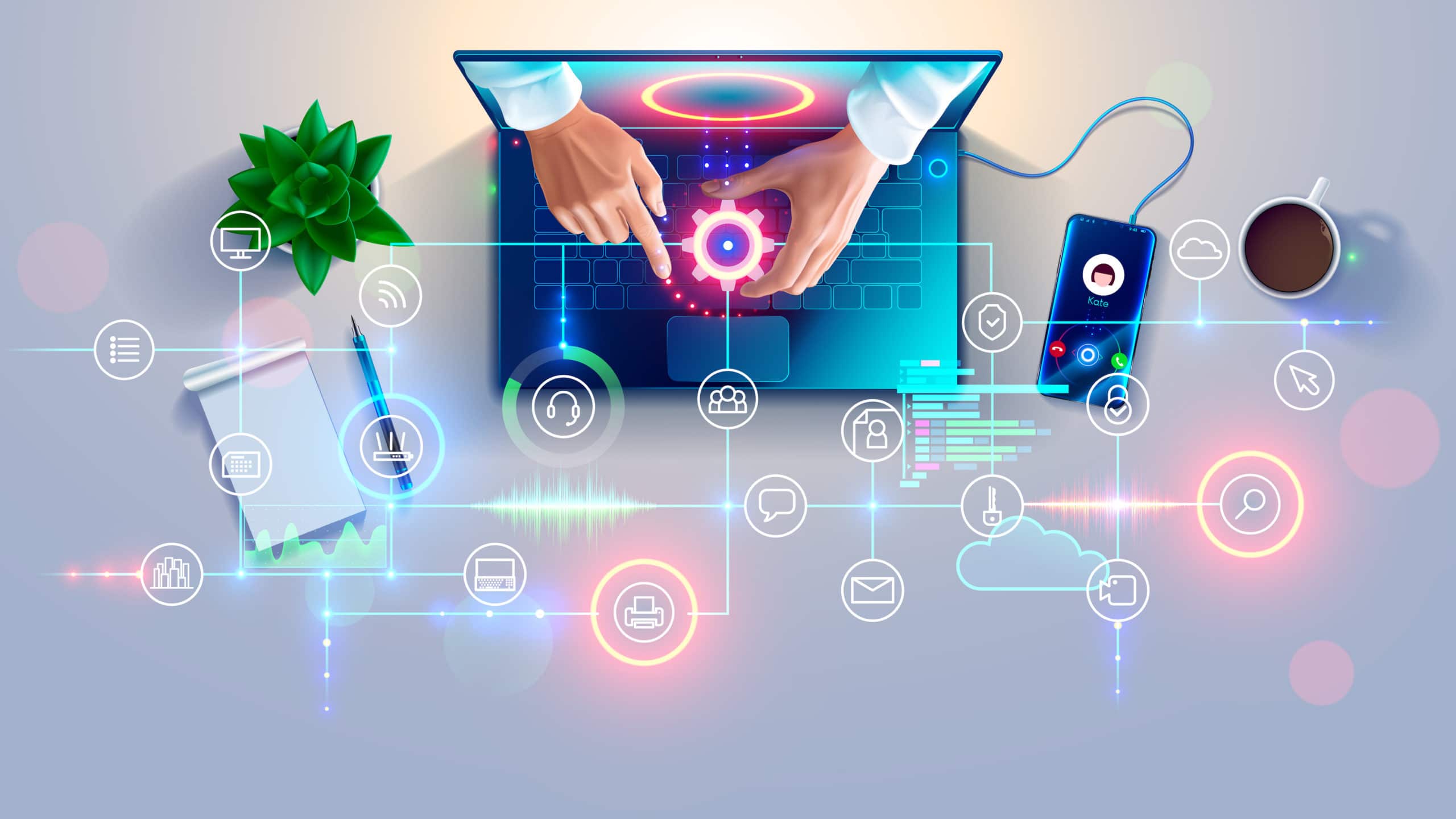Working remote means facing cybersecurity challenges head-on. To protect your data, use multi-factor authentication and secure VPNs. Watch for insider threats and follow robust security protocols. Train yourself on cybersecurity awareness and monitor user behavior. Encryption and secure data-sharing channels are essential.
Stay safe by prioritizing VPNs, multi-factor authentication, and awareness training. Avoid public Wi-Fi for sensitive tasks. Be proactive in securing your remote work setup. These steps are essential to keeping your sensitive information safe when working remote.
Challenges of Remote Cybersecurity
In the domain of remote work, tackling the challenges of cybersecurity poses a critical concern for both employees and organizations alike. As remote employees access company systems from various locations, the risk of security breaches looms large. Multi-factor authentication and secure VPNs can enhance protection against potential threats, especially when connecting to public Wi-Fi networks.
Additionally, monitoring insider threats and implementing robust security protocols are essential to safeguard sensitive data.
To strengthen defenses further, it is essential to prioritize user behavior analytics and cybersecurity awareness training. Organizations can effectively detect and mitigate security risks by educating employees on safe practices and encouraging reporting of suspicious activities.
Data protection measures, including encryption and secure data-sharing channels, are essential for maintaining a secure remote work environment.
Essential Security Measures for Working Remote
Tackling cybersecurity challenges in remote work demands a vital approach to implementing essential security measures to safeguard sensitive data and mitigate potential risks effectively. Working remotely exposes you to various cyber threats, making it necessary to prioritize security measures.
Utilize VPNs to establish secure connections when accessing company networks from home. Implement multi-factor authentication to add an extra layer of protection to your login process. Enforce strict security protocols to prevent unauthorized access and data breaches. Avoid using public Wi-Fi for sensitive work tasks to minimize the risk of data interception.
Educate yourself on security awareness training to stay informed about the latest threats and best practices. Regularly update security protocols and guarantee data protection through encryption methods. By following these security measures, you can create a safer remote work environment and reduce the likelihood of falling victim to cybersecurity incidents.
Mitigating Specific Remote Work Risks
To effectively safeguard sensitive data and mitigate potential risks in a remote work environment, prioritize implementing specific security measures tailored to address individual vulnerabilities. When considering the security of remote workers, it’s vital to focus on mitigating specific risks to guarantee a safe work environment.
Here are essential steps to enhance security for remote work:
- Utilize VPNs: Encourage the use of Virtual Private Networks (VPNs) to establish secure connections, encrypt data, and protect information transmitted over networks.
- Implement Multi-Factor Authentication: Enhance security by requiring multiple verification forms, such as passwords and biometrics, to prevent unauthorized access and strengthen authentication methods.
- Avoid Public Wi-Fi: Avoid using public Wi-Fi for work-related tasks. It poses a significant security risk due to vulnerabilities and threats in unsecured networks.
Working Remote Security Best Practices
Implement VPNs and multi-factor authentication to enhance security for remote work. VPNs create a secure connection for remote work activities, safeguarding your data from threats. Multi-factor authentication adds an extra layer of protection, ensuring that only authorized users can access sensitive information. By enabling these security measures, you significantly reduce the risk of unauthorized access and data breaches.
Educating yourself on security protocols and best practices for remote work security is vital. Stay vigilant and report any suspicious behaviors immediately. Regularly update your security measures and ensure that encryption is in place for data protection. Be mindful of insider threats and monitor your online activities for any signs of unauthorized access. Following these guidelines and implementing strong security measures can create a safer remote work environment for yourself and your organization.
AE Technology Group Remote Security Services
Consider utilizing AE Technology Group Remote Worker Security Services for enhanced security in remote work environments. Regarding safeguarding your remote work setup, AE Technology Group offers thorough solutions tailored to address the evolving landscape of cyber threats. Here’s why opting for AE Technology Group can improve your remote work security:
- Protection against Insider Threats: AE Technology Group implements user behavior analytics to help detect and prevent insider threats in your remote work environment.
- Secure Connection with VPNs: Implement virtual Private Networks (VPNs) provided by AE Technology Group to guarantee a secure connection for remote work operations.
- Security Awareness Training: Educate your staff on safe practices and enhance their awareness of cyber threats with AE Technology Group’s security awareness training programs.
With AE Technology Group’s Remote Worker Security Services, you can strengthen your defenses against data breaches, cyber threats, and unauthorized access, enabling you to work remotely with confidence and peace of mind.
Essential Measures and Best Practices
To sum up, working remotely poses unique cybersecurity challenges that demand proactive measures to safeguard your data and privacy. You can establish a secure remote work environment by implementing essential security measures, addressing specific risks, and following best practices.
Remember to stay vigilant, use secure access protocols, and leverage remote security services like AE Technology Group, a WheelHouse IT company to protect against potential threats.
Stay safe and secure while working remotely!






